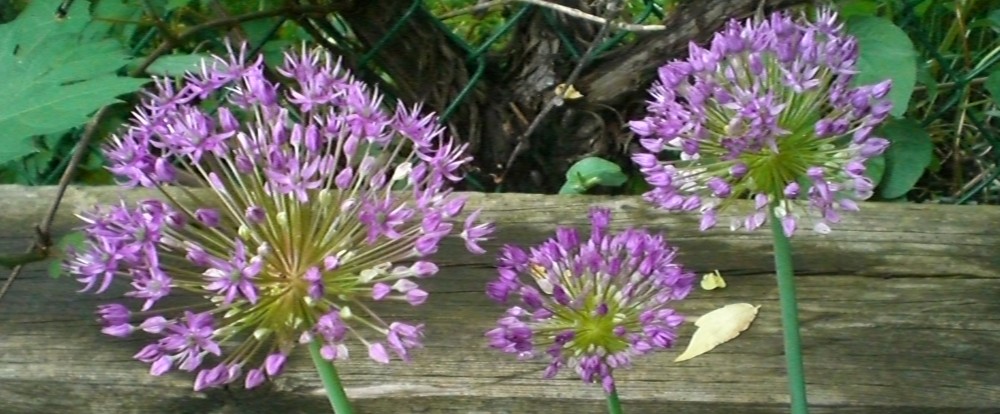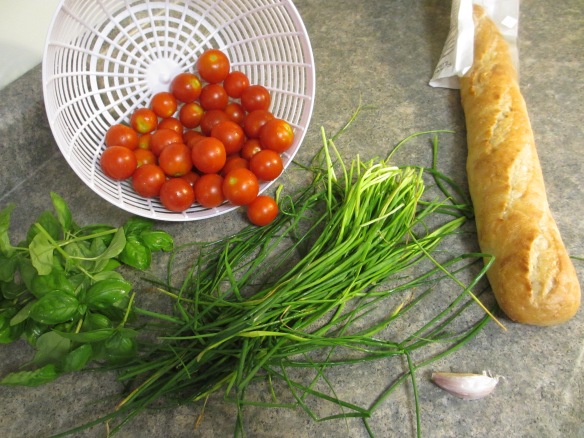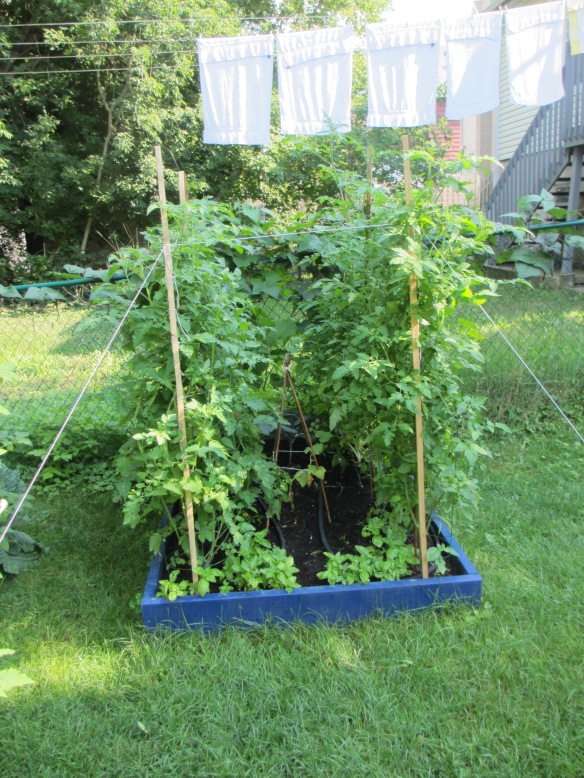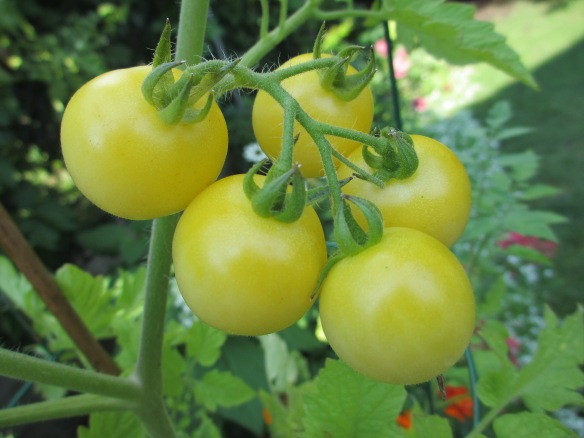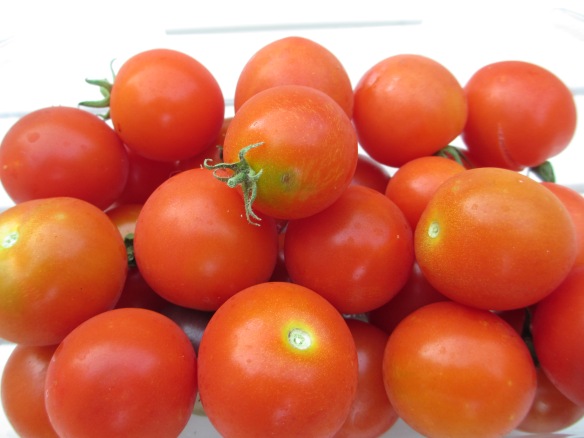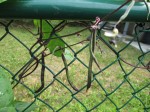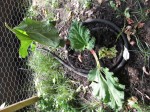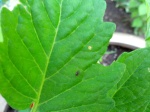With an abundance of tomatoes from the garden, we’ve been using them in all sorts of things. I made this bruschetta the other day using ingredients from the garden. The only ingredient that didn’t come from the garden is the garlic (next year I plan to plant some though!). I sometimes find the standard bruschetta we make a little too oniony, so the mild onion flavor from the chives was a nice change. Below is the basic recipe. I didn’t keep track of quantities, but I would recommend using whatever quantity you like based on personal preference anyways 🙂
Ingredients: Cherry tomatoes, basil, chives and 1 clove of garlic. Salt and pepper to taste.
Instructions: Slice the tomatoes into quarters, rip up the basil leaves and chop the chives to whatever size you like. Dice the garlic or use a garlic press. Combine all ingredients and let flavors mix. Cut the baguette into slices and toast them in the oven using the broil setting. You can drizzle the bread with good olive oil before spooning on the bruschetta, but this is optional. Serve pre-assembled on a tray or put out a basket of toasted bread and the bowl of bruschetta and let everyone assemble their own.
The final product:
Related articles
- Perfecting Classic Bruschetta [Intro to Cooking] (collegecandy.com)
- Caprese Bruschetta (inspiredbyfamilymag.com)
